EduTech Asia 2018
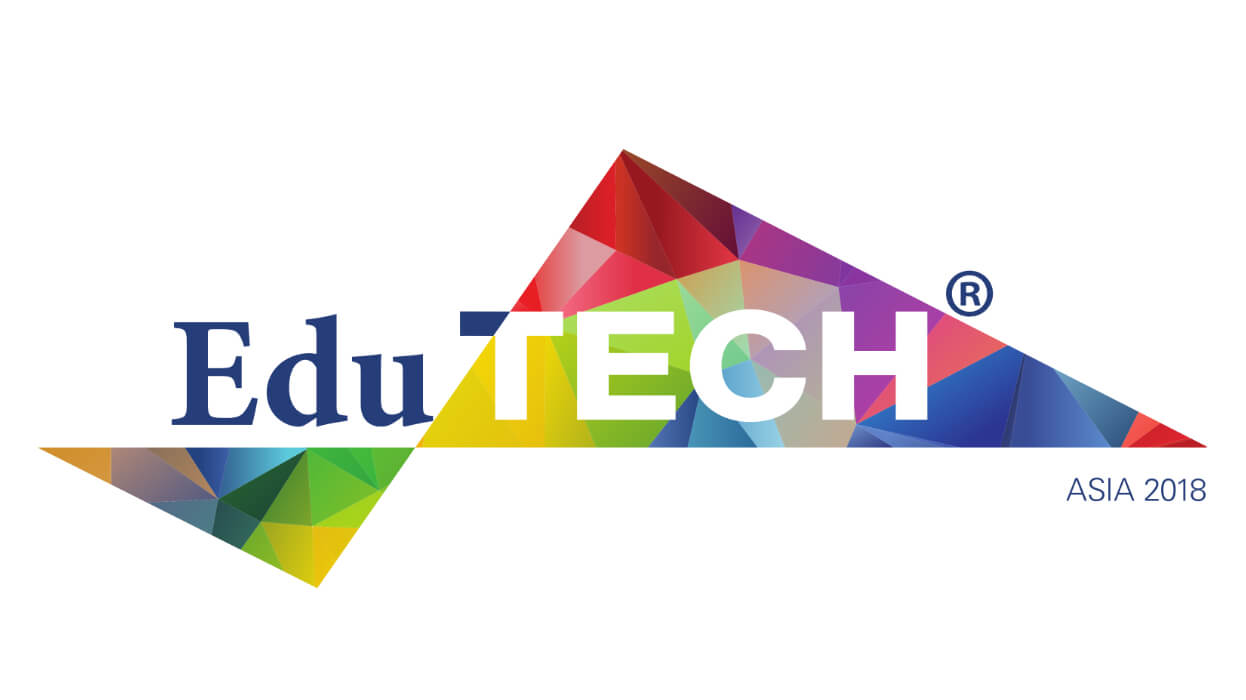
This year, I had the good fortune to visit EduTech Asia 2018 on the day the exhibition hall opened. This was a conference held in Singapore’s Suntec City Convention Centre wherein representatives from educational institutes and technology companies showed up to showcase their innovations in the general aid of education. I attended the event on 9th October with my wife and we both came away feeling very motivated.
EduTech couldn’t have come at a better time for me. As it happens, my wife, an ex-preschool teacher, is now re-training to be a web developer. She has some great learning resources at her fingertips in the form of her online course with ALPHA Camp and other genuinely useful materials online. I also want to be part of her learning journey, too. Whilst I can give her ad hoc advice when she gets stuck with a problem or has a question about a specific topic, I’d rather take this as an opportunity to help guide her into being ready to take on real challenges in her new career path.
I’ve been grappling lately with various means of effectively teaching web development skills and visiting EduTech even for just the one day has given me lots to think about, much inspiration and some new ideas for things to experiment with. My wife and I have even found inspiration enough to start collaborating together in creating our first app— more on this another time.
With all that being said, I’d like to share some thoughts about my favourite events from the day and my main takeaways from EduTech Asia 2018.
My favourite events
TrustEd (ico.trusteducation.io)
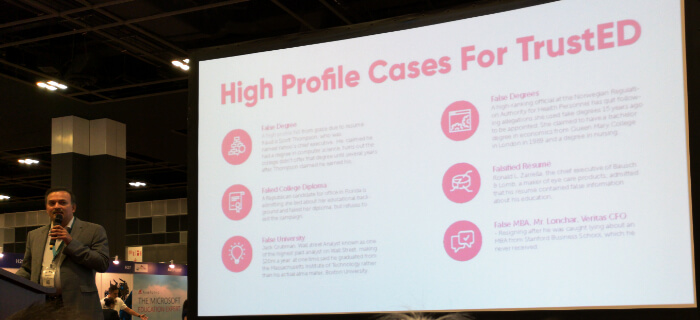
TrustEd is a startup that was founded in 2017 by Raghu Bala, who was also the speaker at their EduTech talk. The purpose of his startup is to use blockchain technology to maintain educational certificates and records obtained at education institutes globally. Generally speaking, their reason for using blockchain for this purpose is their way of ensuring that the records kept on the blockchain are completely safe.
I’ll admit it: I’m just curious to hear anything that’s related to blockchain. In particular, I was most curious to know it could be (sensibly) used in the education sector. I’ve heard in the past year a couple of cases where universities want to leverage it somehow and it stuck me as an odd coupling.
Credit where it’s due though— Raghu Bala’s talk did give me something to chew on and it sounded sensible.
For starters, I dislike very much needing to keep physical copies of my education certs. When I applied for permanent residency in Singapore, the first thing they asked me for after my passport was a comprehensive stack of physical proof (i.e., card and paper certificates) that I achieved my claimed levels of education. Luckily for me, I had the foresight to bring all of those certificates with me when I moved out here. If I’d forgotten something, I’d be stressing about where on earth those missing bits of paper were. If I’d lost or damaged one of my certs, I’d be stressing instead about who to reach out to in my old schools to get reprints done and sent out to me.
Granted, that’s not TrustEd’s central reason for introducing distributed ledger-based tech into the industry. Their main focus is on making sure that records can’t be modified or forged. If all of your education history is written to an immutable distributed ledger, there’s such an infinitesimally small chance that it could ever be messed with— even by those who issued your certificates in the first place.
Their hope is also to get enough institutes signed up that their brand would become a very well-trusted one, trusted enough for us to finally do away with physical copies of our records. Given the distributed nature of blockchain, more institutions means more blockchain nodes and therefore more security. They envisage that once students are attending schools that are part of the TrustEd network, those same students could then also share their academic qualifications securely with governments or companies they wish to. The idea reminds me of sharing a document to people via Google Docs. This, to me at least, is a wonderful idea.
Of course, whether they can successfully gain the institutions and the trust and achieve their goal to obtain an initial funding amount of $21,070,000 USD (according to their website, at the time of writing) is another matter entirely.
Overall, this talk was a bit of a red herring. It was one I was keen to attend purely for the technical details rather than for gaining inspiration towards teaching technical skills. Even so, I still found it thought-provoking and it gave me a good taste for what blockchain technology might be genuinely useful for outside of banking-related use cases.
Strawbees (strawbees.com)
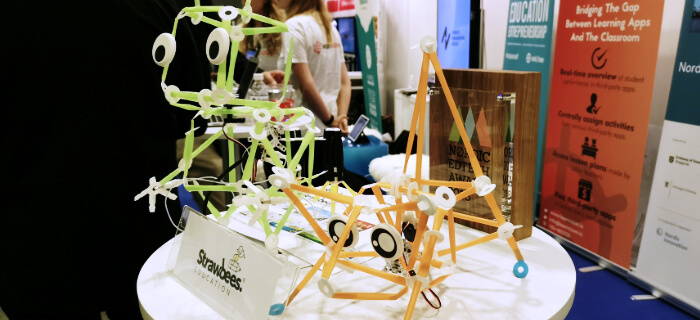
Strawbees is a Swedish company that produces modelling components and accompanying software for kids and adults to create their own contraptions. Their vision is to provide the tools for kids to be able to exercise their creativity in building things with 3 very simple elements: coloured straws, connecting pieces and programmable modules with various different purposes.
Whilst the CEO, Erik Bergelin, didn’t give a talk at the conference, we did have a good chat to him as he playfully built up a very rough-n-ready robot to test a design idea, which was sort of a pyramid-shaped thing with one oscillating leg. Sales pitch or no, his point of view matched ours: the other robots on the market are either too complicated or not configurable enough to offer much creative freedom or educational benefit.
To briefly talk about what the other “robot” offerings were at EduTech Asia, they essentially boiled down to two types. The first was a type of robot that came with some pre-defined actions like dances or quirky movements that could be cued from a smartphone/tablet. The second was a type of robot that could be controlled like a remote-controlled car via a smartphone/tablet and usually packed a few sensors for light or sound to detect things around it. The latter was certainly the more interesting of the two types to see, given that each different company had different ideas about what their robots should detect and react to. But still, I couldn’t tell you about one specific robot or company that stood out. If I were a child receiving one of these shiny, expensive things I’d probably have put it aside after a week or so of tinkering. The experiences on offer on the whole appear to be very shallow for the amount being charged, in my opinion.
The things I like most about Strawbees’ approach are how it’s constructed and how the modules are programmed. Construction is dead simple: snap the colourful plastic straws together with the provided connecting pieces and stick one or two a modules like motors or sensors somewhere. How do you program the modules? From what Erik showed us, it’s a matter of plugging a USB cable into the specific module you want to program, transfer a program to it and it’s ready to go. The program itself is created by you using a web app interface that looks a bit like Scratch. It seemed easy enough to use. Drag various blocks onto the screen, connect them up, change where inputs/outputs are sent to and configure parameters for things like motor speed, degrees of rotation and so on. The only thing I found slightly irksome was the need to plug in a cable to transfer a new program each time changes were made. It would have been sweet to see program changes committed wirelessly to the modules.
The point is, everything here is simple and understandable and immediately engaging for the creative-minded. Each component serves a fundamental purpose and composed together, they can be used to build things that are potentially quite intricate. For me, I feel that it’s a perfect medium for prototyping and promoting ideation. It also just looks fun to get your hands on.
Strawbees appears be in a minority in the field of educational robots right now. They’re confidently putting aside fancy aesthetics and flashy features in favour of doing what educational robot kits are supposed to be doing: helping children (and adults, I’d argue) to learn something. My opinion is that rather than building a robot, you’re building a system. It could be or do whatever you want and be as simple or as complex as you want. Got an idea? Build it. This is the kind of freedom I’m used to having as a software engineer, so this way of thinking resonates greatly with me.
Photon (photonrobot.sg)
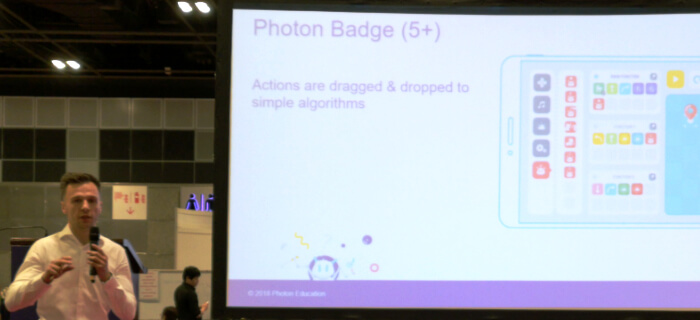
Photon is the name of another robot concept aimed solely at children. It’s also the name of the company that builds and sells it. This one is very different to Strawbees in that it sits solidly in that category of robots that comes pre-built, looking all sleek and modern. To be brutally honest: the design didn’t wow me, the features weren’t earth-shattering and it struck me immediately as a toy— akin to most of the other robots on display at EduTech.
So why is Photon sitting in my favourites list? Well, the robot itself isn’t in my list necessarily. The reason Photon stuck in my mind after leaving their talk (presented by the Polish founder, Marcin Franc) was because of their potentially innovative approach to teaching programming skills.
One of the tag-lines Photon advertises on their website is: “World’s first robot that develops with a child”. I’d say they’re stretching it a tad, but what they’re actually saying is that they’ve built a system that provides multiple ways of programming the robot, each with different degrees of complexity. Currently they offer 4 different programming interfaces: Photon Draw (ages 5-7), Photon Badge (ages 7-9), Photon Blocks (ages 9-11) and Photon Code (ages 11-13). This is what I find very interesting. I’ve seen programming interfaces before (such as Strawbees’) that blend elements of visual programming for beginners with hand-coded options for more advanced users, but 4 different approaches? Now perhaps you see what first caught my interest with Photon.
The primary way they differentiate each level of programming complexity is by how visual or technical the interface is. Photon Draw, the easiest to grasp, looks more like a game that programming, which is because it basically is a game— which isn’t a bad thing. Children here will need to solve problems by drawing lines on the screen of their iPad or Android tablet on a fixed grid of squares to guide their Photon robot through various obstacles, performing certain tasks along the way. The next level up, Photon Badge, sticks with the same theme of making the robot move and do things on a fixed grid, but by dragging movement and action “badges” into various divisions on the screen symbolising the body of the program and separate functions. Photon Blocks steps things up a bit by removing the obvious grid on the screen altogether and going all Scratch-like, providing big coloured blocks that symbolise elements common in programming languages (loops, conditionals, functions) that can be layered in a sequence to make up a program. Finally, Photon Code takes the blocks approach and removes many of the pre-defined blocks and leaves only primitive ones that require the user to add their own code to for them to do something useful.
I like the fact that Photon is not just one of these “push a button to do a dance” kind of robots, despite its deceptively toy-like aesthetics. Out of the box, it can’t actually do anything without the user having spent time programming it. This is what the company is actually getting at with their slogan: “..develops with a child”. What they envisage is that a child will be able to have their Photon robot from age 5 through to 13, continually learning new ways of programming it with gradually advancing complexity until the point where they’re 1 step away from coding a whole program from scratch.
Schools Hackathon
Last but not least, before we left for the day, we were both keen to watch the presentations for the Schools Hackathon. This was a hackathon event that took place over the course of 5 weeks, one group of kids per school, culminating with the live presentation to a panel of adult judges and spectators at EduTech on the day we attended (9th Oct). The theme of the hackathon was: “Creating education learning spaces for kids by kids”. The schools ranged from local Singapore-based ones to participants from China, Thailand, Philippines and Indonesia. Spectators were also able to cast their own vote for who they thought were the best performing team.
First of all I have to say: wow. We were seriously impressed by what these groups kids had managed to do. Not only had they really thought through creative ideas, creative enough in fact that every team had a completely different approach to the others, but the ways in which they packaged and presented their ideas was outstanding. Seriously, these kids gave far more invigorating and clear presentations than some of the conference speakers I’ve seen in the past. Whether it was putting on a little back-and-forth banter to illustrate a problem they wanted to address or showing off something they made, they really were very interesting to watch. A lot of us, myself included, could (should) take cues from the way kids present!
Apart from selling their ideas, they also on the whole did a great job of putting together digital and/or tangible prototypes to show how they’d execute their solution. My personal favourites (although it’s quite hard to choose) were from two schools in particular. Unfortunately, despite having the list of schools in front of me, I can’t recall the names of the ones I liked the most.
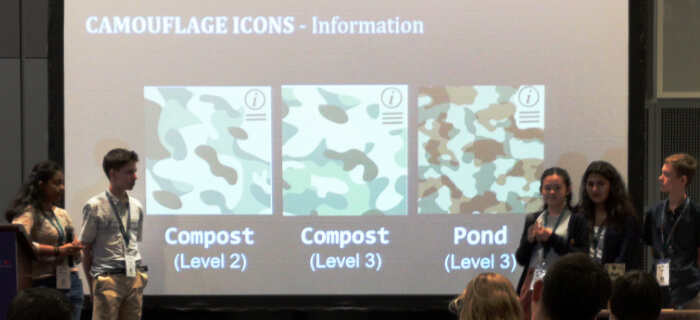
That being said, my first favourite team was from a school that had a garden and an area of jungle that students visit to learn about agriculture and wildlife. The problem they identified was that they didn’t have materials placed in the outdoors for visitors to pick up and learn more. They may have had plaques with words on them, but these often tend to perish over time. Their suggested solution was to use varying types of QR codes placed in key areas that visitors could scan with a smartphone to view relevant content such as text, images, audio clips and videos. The best part was that they had a fully working prototype, with the use of an app called HP Reveal and some custom QR codes that the team made. The app enabled them to project the videos in real-time onto the QR code blocks in AR (Augmented Reality) and the effect of them displaying their own educational videos was pretty impressive.
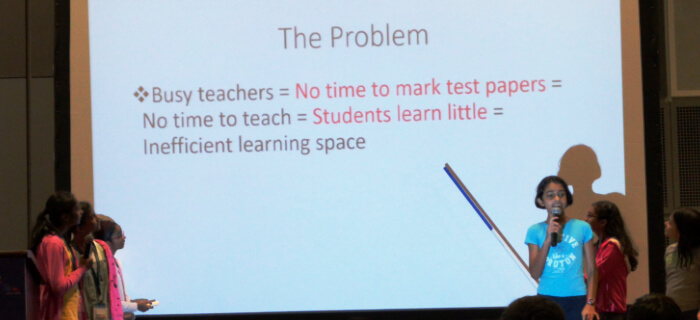
My second favourite team identified that teachers spend a lot of time marking exams and answers to questions that students submit. What they envisaged is a system that enables students submit answers to exam questions qualitatively (as in, writing or typing out their own answers rather than selecting from a multiple choice quiz) and is somehow able to grade their answers almost immediately without needing a teacher there to mark them. The concept sounded nice, almost cute to us. But then they showed us a working web app for their idea and we realised how close they already are to achieving their goal. They made use of an existing system: IBM Watson. Granted, it’s a pre-build product they made heavy use of, but their execution for a first prototype and the idea itself were wonderful.
Overall, the presentations were some of the more memorable bits we saw at EduTech Asia and it gave us both a lot of inspiration to see these young students come up with such inventive ideas to solve a myriad of problems in education.
Final thoughts
The above were just a small handful of the things that stood out in my mind when I came back to my laptop to write this post. Regardless, there were many more little things I enjoyed about the day that me and my wife took away with us.
I’m not going to exaggerate and say that I had a bunch of epiphanies after coming away from EduTech Asia 2018. What I did get out of it though was great enjoyment at seeing how passionate children and adults are about their projects. I also got to take a good luck at what startups and ICOs are aiming their sights at and the ways that technology is being interwoven in a range of different ways into educational products. Being a software engineer I was a little worried that we’d only be given staged demonstrations and scripted presentations to sell us things. Whilst there was at least a little of that going on (tell me about a conference that doesn’t), I was really pleasantly surprised by the passionate talks and demos by kids and adults alike and I came away buzzing on a creative high.
In summary, EduTech Asia 2018 was more inspirational and interesting than tech conferences I’ve been to in the past. I’d definitely like to visit again next year or the year after.
Thanks for reading! Do feel free to leave a comment if you have opinions about any of the above.
Oh and if educational-related tech interests you, you might want to check back soon for my next post, where I’ll be talking about one of my new related side-projects. Cheers!
